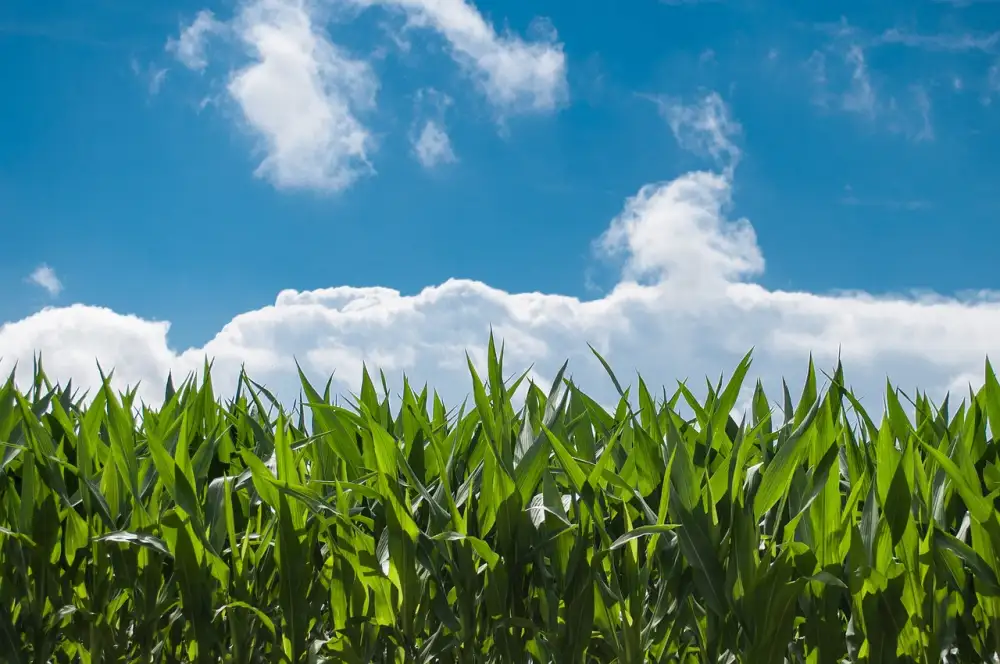Unlocking the Secrets of Nixtamalization: Unveiling the Ancient Maize Preparation Technique

- The History and Origins of Nixtamalization
- Understanding the Science behind Nixtamalization
- The Steps Involved in Nixtamalization Process
- The Benefits of Nixtamalization for Maize and Health
- Exploring the Culinary Applications of Nixtamalized Maize
- Nixtamalization in Different Cultures and Cuisines
- Tips and Tricks for Nixtamalizing Maize at Home
Nixtamalization is an ancient maize preparation technique that has been used for centuries by indigenous cultures around the world. This traditional method involves soaking and cooking maize in an alkaline solution, typically made from water and wood ash or lime. The process not only transforms the texture and flavor of the maize but also enhances its nutritional value. Join us on a journey as we delve into the secrets of nixtamalization and uncover the rich history and culinary applications of this fascinating technique.
The History and Origins of Nixtamalization
Nixtamalization, the ancient maize preparation technique, has a rich history that dates back thousands of years. Originating in Mesoamerica, specifically among the indigenous peoples of Mexico and Central America, nixtamalization played a crucial role in their culinary traditions. The word "nixtamal" itself is derived from the Nahuatl language, spoken by the Aztecs and other indigenous groups.
The practice of nixtamalization can be traced back to as early as 1500 BCE. It was a fundamental process for transforming raw maize into a more nutritious and versatile ingredient. The technique was not only used for making tortillas but also for preparing various other traditional dishes like tamales, atole, and pozole.
Nixtamalization was not limited to Mesoamerica alone. Similar methods of alkaline cooking were also employed by ancient civilizations in South America, such as the Incas and Mayans. This widespread use suggests that nixtamalization was recognized as an effective way to enhance the nutritional value of maize and make it more digestible.
The historical significance of nixtamalization goes beyond its culinary applications. It played a vital role in sustaining these ancient civilizations by providing them with a reliable food source. Additionally, it served as a cultural symbol, representing the deep connection between people and corn in Mesoamerican societies.
Today, nixtamalization continues to be practiced in many parts of Mexico and Central America, preserving this age-old tradition. Its influence has also spread globally as people recognize its nutritional benefits and unique flavor profile. By understanding the history and origins of nixtamalization, we can appreciate its importance in shaping culinary traditions and embrace its timeless appeal.
Understanding the Science behind Nixtamalization
Nixtamalization, the ancient maize preparation technique, is not just a culinary tradition but also a scientific process. The science behind nixtamalization lies in the chemical reaction that occurs when maize is cooked with an alkaline solution, usually made from limestone or wood ash.
During nixtamalization, the alkaline solution breaks down the tough outer layer of maize, known as pericarp, and softens it. This process is called alkali cooking. The alkali also helps to release essential nutrients such as niacin and calcium from the maize, making them more bioavailable for our bodies to absorb.
The main chemical reaction that takes place during nixtamalization is known as hydrolysis. The alkali breaks down the hemicellulose present in maize into simpler sugars. This not only enhances the flavor and aroma of the maize but also increases its nutritional value.
Furthermore, nixtamalization alters the structure of proteins in maize, making them more easily digestible. It also reduces mycotoxins present in maize, which are harmful substances produced by certain fungi.
The science behind nixtamalization has been studied extensively by researchers who have found that this traditional technique improves the nutritional quality of maize while enhancing its taste and texture. Understanding these scientific principles allows us to appreciate why nixtamalization has been practiced for centuries and continues to be valued today.
The Steps Involved in Nixtamalization Process
The nixtamalization process involves several steps to transform maize into a more nutritious and versatile ingredient. First, the corn kernels are soaked in an alkaline solution, traditionally made from slaked lime or wood ash. This soaking softens the outer hull and helps remove impurities. After soaking for a specific period of time, usually overnight, the maize is drained and rinsed thoroughly to remove any remaining residue. The next step is to grind the nixtamalized maize into a dough-like consistency using a traditional stone grinder or modern equipment like a food processor or blender. This dough, known as masa, can then be used to make various traditional dishes such as tortillas, tamales, and pozole. The entire nixtamalization process is labor-intensive but essential for unlocking the full potential of maize's nutritional value and enhancing its flavor profile.
The Benefits of Nixtamalization for Maize and Health
Nixtamalization offers numerous benefits for both maize and health. Firstly, it increases the nutritional value of maize by making its nutrients more bioavailable. The process releases niacin, an essential B vitamin, making it easier for our bodies to absorb. This helps prevent diseases like pellagra, which is caused by niacin deficiency. Additionally, nixtamalization enhances the protein content and improves the digestibility of maize. It also reduces mycotoxins present in raw maize, making it safer to consume. Overall, nixtamalization not only enhances the flavor and texture of maize but also boosts its nutritional profile, promoting better health outcomes.
Exploring the Culinary Applications of Nixtamalized Maize
Nixtamalized maize opens up a world of culinary possibilities. Once the maize has undergone the nixtamalization process, it becomes more versatile and flavorful, making it ideal for various dishes.
One popular application is the creation of masa, a dough used to make traditional corn tortillas. The nixtamalization process enhances the texture and taste of the masa, resulting in soft and pliable tortillas with a distinct corn flavor.
Beyond tortillas, nixtamalized maize can be used to make tamales, sopes, and pupusas. These traditional dishes are beloved in Latin American cuisine and rely on the unique properties of nixtamalized maize to achieve their authentic flavors and textures.
In addition to savory dishes, nixtamalized maize can also be used in sweet preparations. It can be ground into flour to make delicious cornbread or used as a base for desserts like atole or champurrado.
The versatility of nixtamalized maize extends beyond Latin American cuisine. Chefs around the world are discovering its potential in creating innovative dishes that showcase its unique flavor and texture. From soups and stews to salads and grain bowls, nixtamalized maize adds depth and complexity to any recipe.
By embracing nixtamalization in our culinary endeavors, we not only honor ancient traditions but also unlock a world of flavors that have been cherished for centuries. So next time you're in the kitchen, consider incorporating nixtamalized maize into your cooking repertoire for an authentic taste experience like no other.
Nixtamalization in Different Cultures and Cuisines
Nixtamalization is not only a technique used in ancient Mesoamerican cultures but has also spread to various other cultures and cuisines around the world. In Mexico, it forms the basis for traditional dishes like tamales, tortillas, and pozole. In Central and South America, nixtamalized maize is used to make dishes such as arepas and pupusas.
In the Caribbean, it is an essential part of making dishes like Jamaican cornmeal porridge and Dominican mofongo. Nixtamalization has even made its way into African cuisine through the transatlantic slave trade, where it is used in dishes like Nigerian akara and Ghanaian banku.
The versatility of nixtamalized maize can be seen in Asian cuisines as well. In Japan, nixtamalization is used to make hominy grits for dishes like takikomi gohan (mixed rice) and ohagi (sweet rice balls). In Southeast Asia, nixtamalized maize is used in Indonesian kue dadar (coconut pancakes) and Filipino bibingka (rice cake).
The widespread use of nixtamalization across different cultures highlights its importance in enhancing the flavor, texture, and nutritional value of maize-based foods. It connects us to our ancestral roots while offering a unique culinary experience that transcends borders.
Tips and Tricks for Nixtamalizing Maize at Home
1. Use dried field corn: Look for dried field corn specifically labeled for nixtamalization. This type of corn has a higher starch content, which is essential for achieving the desired texture and flavor.
2. Soak the corn overnight: Before starting the nixtamalization process, soak the corn in water overnight. This will help soften the kernels and make them easier to work with.
3. Add calcium hydroxide (cal): Calcium hydroxide, also known as cal or slaked lime, is a key ingredient in nixtamalization. It helps break down the hulls of the corn and improves its nutritional value. Add about 1 tablespoon of cal per pound of dried corn.
4. Rinse thoroughly: After soaking, rinse the corn thoroughly to remove any excess cal and impurities. Use a colander or strainer to ensure all the cal is washed away.
5. Cook until tender: Once rinsed, transfer the corn to a large pot and cover it with fresh water. Bring it to a boil and then reduce the heat to a simmer. Cook until the kernels are tender but still hold their shape, usually around 45 minutes to an hour.
6. Cool before using: After cooking, allow the nixtamalized maize to cool completely before using it in recipes or grinding it into masa dough. This will help retain its texture and prevent mushiness.
7. Store properly: If you have leftover nixtamalized maize, store it in an airtight container in the refrigerator for up to three days or freeze it for longer shelf life.
By following these tips and tricks, you can successfully nixtamalize maize at home and unlock its authentic flavors and textures for your culinary adventures!
In conclusion, nixtamalization is not just a cooking technique; it is a celebration of tradition and flavor. By unlocking the secrets of this ancient maize preparation technique, we can truly appreciate the rich history and cultural significance behind it. Nixtamalization not only enhances the taste and texture of maize but also improves its nutritional value. From tortillas to tamales, nixtamalized maize finds its way into various culinary applications, adding depth and authenticity to dishes. So why not embrace this time-honored tradition and savor the unique flavors that nixtamalization brings? Let us embark on a journey through culinary delights by exploring the wonders of nixtamalization.
Published: 23. 11. 2023
Category: Food



